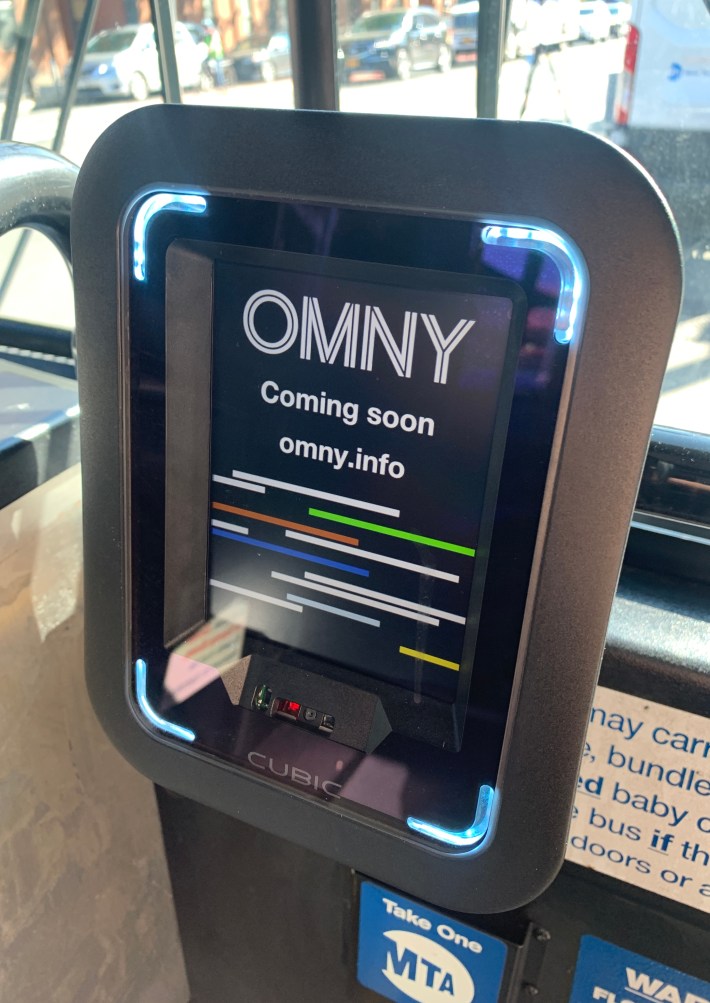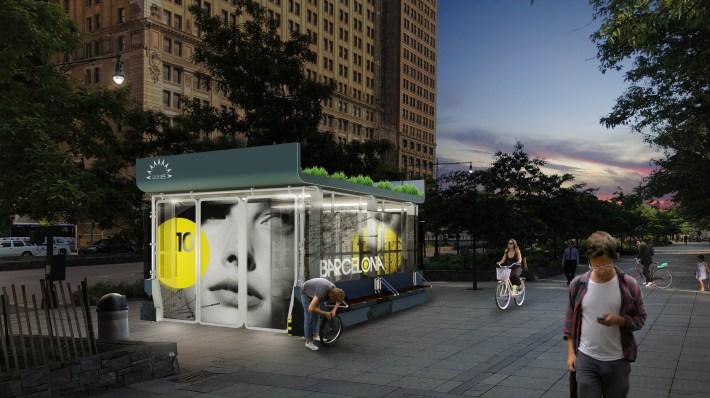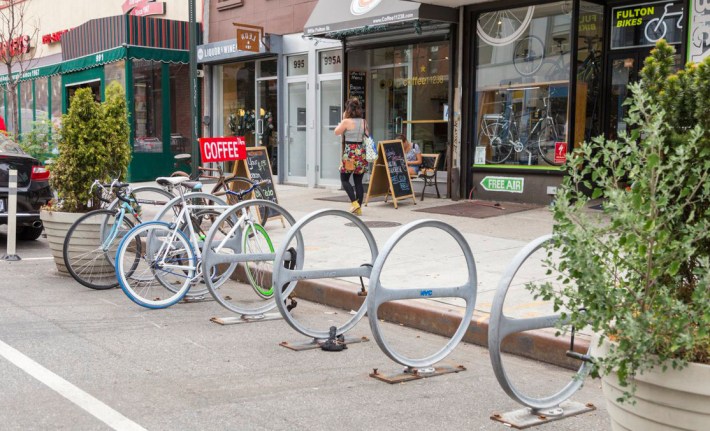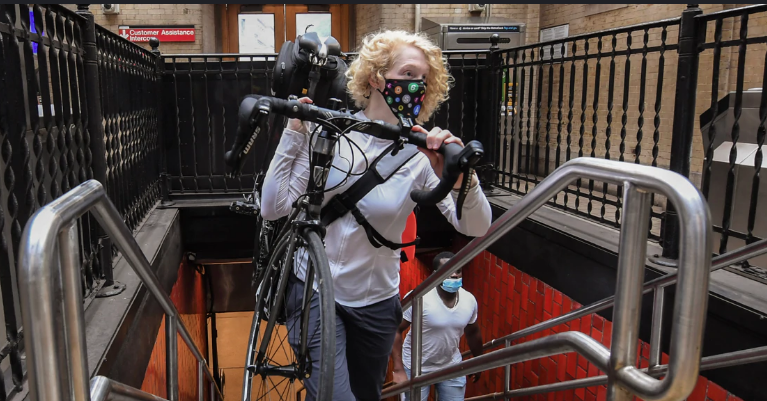COVID-19 has accelerated nascent shifts in the city’s transportation landscape favoring more equitable, human-scale mobility. With mayoral hopefuls — in a stark contrast from previous campaigns — touting the benefits of bike lanes and open streets, opportunities are emerging to transform the city’s transportation landscape into a model of safe, efficient urban mobility. Here are five transportation concepts that mayoral contenders should be considering:
Fare Card Interoperability
The Metropolitan Transportation Authority's new contactless OMNY system opens the door to regional fare-card interoperability or a single transportation passport. Metro-area transportation can be complicated for the uninitiated because of the many systems that operate in the same space with different payment methods. Fare interoperability would enable consumers to use a single payment card or phone app to pass seamlessly among regional transportation systems (for example, as passengers now use conventional MTA MetroCards to use the Port Authority of New York and New Jersey’s AirTrains and PATH trains).
Hundreds of thousands more daily trips could employ this technology. Even bike share could be included in a centralized, cloud-based payment system, enabling passengers from Westchester, Long Island or New Jersey to catch the subway or grab a Citi Bike — all with the tap of a cell phone!
The biggest barrier is leadership and interagency coordination; a strong mayor could align the city’s assets and work with Albany in order to pave the way forward or explore a third-party integration solution.

Private-Public Bike-Parking Partnerships
For years, the city's approach to bike parking has been to install open-air bike racks and the occasional bike corral. This strategy may be good for a quick trip to the park or corner bodega, but it does not lend itself to full-day bike storage. Commuters need to know that their bikes are both secure and weather protected before they will consider riding to and from work.

Brooklyn-based startup Oonee is revolutionizing secure bike parking with a unique blend of urban place-making and modular bike parking. Beyond Oonee, many similar examples of standalone, secure access shelters and valet-based parking solutions exist, most of which pay for their own operations. The city should proactively identify priority locations (including Penn Station, Grand Central Terminal, Fulton Street, and others), and release an open-call request for proposals soliciting innovative solutions. Whether the city pilots multiple solutions or identifies a single vendor, it should quickly deploy secure bike parking with little or no cost — maybe even folding the service into the OMNY payment platform!
Dynamic Curbside Management
The curb represents some of the city's most valuable public real estate. Yet the vast majority of it is devoted to free parking for private vehicles — displacing competing uses such as delivery trucks, routine NYPD operations and general accessibility for other users. Curbs can be transformed into multimodal transportation terminals, dynamic spaces, delivery distribution hubs and environmental assets. Treatments such as bike corrals, street seating, freight-only parking, protected bike lanes and street trees all add tremendous value to New Yorkers, much more so than subsidized parking for private car owners. The next mayor should prioritize the expansion of these opportunities, and work with agencies to quantify the positive effects of these uses.

Urban Freight Consolidation
This could take many regulatory and infrastructure forms, but the essential idea is to corral today's wild west delivery operations with more efficient strategies with smaller, less invasive vehicles. It could be as "simple" as limiting freight-vehicle entry into the city to low-traffic times, such as overnight. Congestion pricing will present us with more regulatory options by using a dynamic pricing model for freight carriers which incentives specific time windows with lower cost central business district entry.

Alternatively, the city can leverage underused industrial spaces to operate as freight-distribution centers. In this scenario, larger tractor-trailer trucks would have a direct route to a single drop-off point. Once delivered, the large trucks would promptly leave the city as smaller, less invasive vehicles — electric trucks, cargo tricycles, etc. — complete the last mile of delivery. Urban freight consolidation could also happen in neighborhoods by using dedicated curb space for freight vehicles to park and make deliveries on foot within a designated zone. (The city would still need to work with freight carriers to incentivize drivers to abide by the restrictions, because now there is no mechanism forcing individual drivers to abide by the rules.)
Bicycle Integration With Transit
Bicycling represents an opportunity to extend the reach of transit, especially in the transit deserts throughout the outer boroughs. Of the top 100 largest transit systems in the country, ours is the only city that does not have fleet-wide bikes onboard transit buses. That’s because the MTA thinks of itself more as a bus and rail operator than a customer-focused mobility provider. The mayor doesn’t control MTA policy, but s/he can direct the Department of Transportation to develop safer bike and pedestrian routes to transit as well as bike parking at transit stations, especially terminal subway stations. Moreover, a city-led campaign could help educate consumers on how to link trips.
Interagency Mobility Task Force
Bureaucratic silos represent a major barrier to the creation of bike and pedestrian infrastructure in the city. The DOT oversees the sidewalks and roadways; the Parks Department holds jurisdiction on greenways inside parks, and the Economic Development Corporation claims jurisdiction over many of the city's waterfronts and development sites. The city needs an interagency mobility task force with a mandate to explore cross-jurisdictional opportunities to enhance bicycle and pedestrian connectivity. (See, for example, the ideas of the new civic group City Rise.)
By bringing these groups together, the city can plan holistically and ensure that projects have safe, simple connections regardless of the agency owning the land. At a minimum, such a body would enable the development of universal design standards across routes (such as the Hudson River Greenway, which has at least three different trail designs at different points). Looping in other agencies such as the Taxi and Limousine Commission, the Department of Environmental Protection and, dare I say it, the NYPD could open the door to a whole new range of opportunities!
Dan Suraci (@bikinghero), a certified planner, authored the American Public Transportation Association’s national guide on bicycle and transit integration and is president of Urban Cycling Solutions.







